Today my sister and I officially join Nomad Tours — she’s on a 10-day trip covering the highlights of Tanzania, and I’m on a 30-day trip from Nairobi to Johannesburg (although we join the group at the end of Day 1 in Arusha, since we’ve been in the neighboring town of Moshi post-Kilimanjaro). Bethany and I are thrilled to kick off this next adventure.
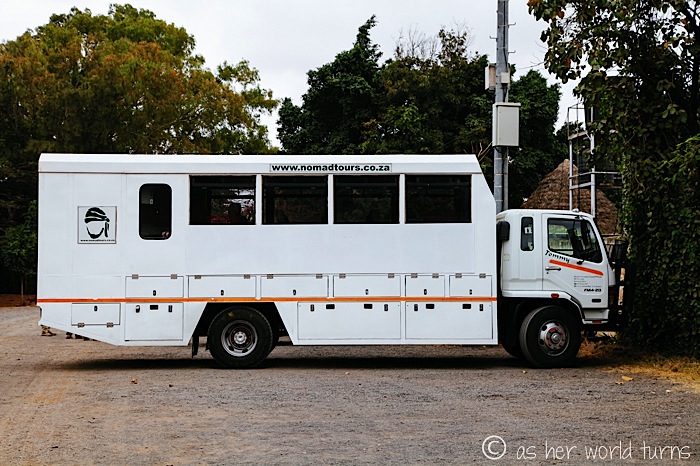
Our group is headed to the Serengeti, but first we’ll stop at Meserani Snake Park, which is exactly what it sounds like. A place filled with snakes.
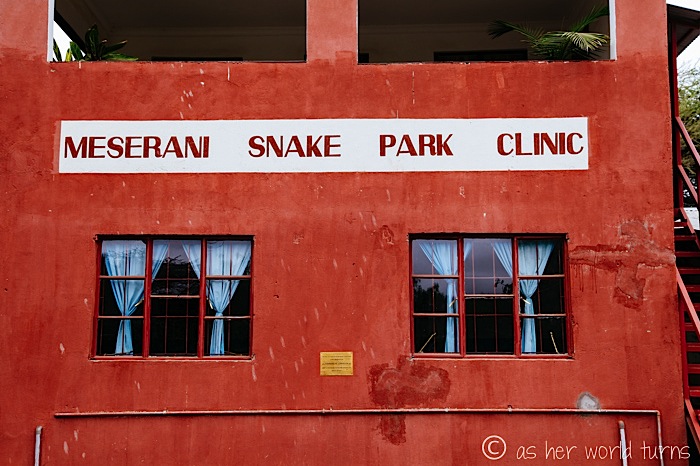
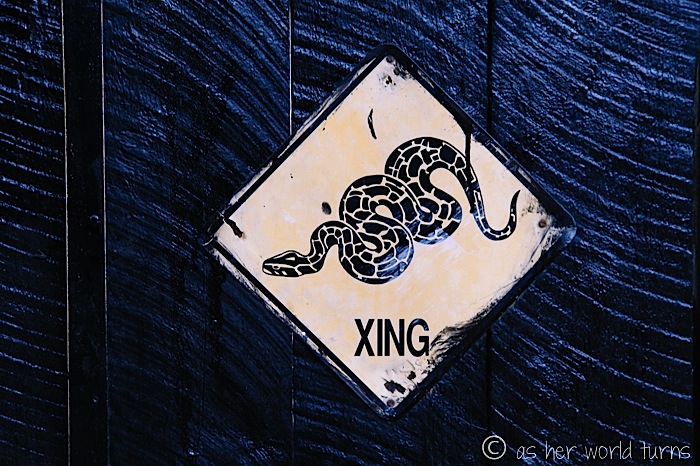
Our fellow tour mate Robin from the Netherlands clicks a shot of these gruesome images of snakes eating humans.
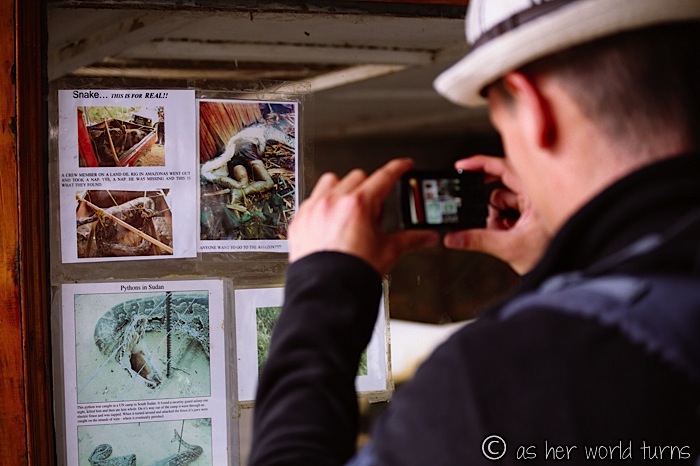
A closer look…
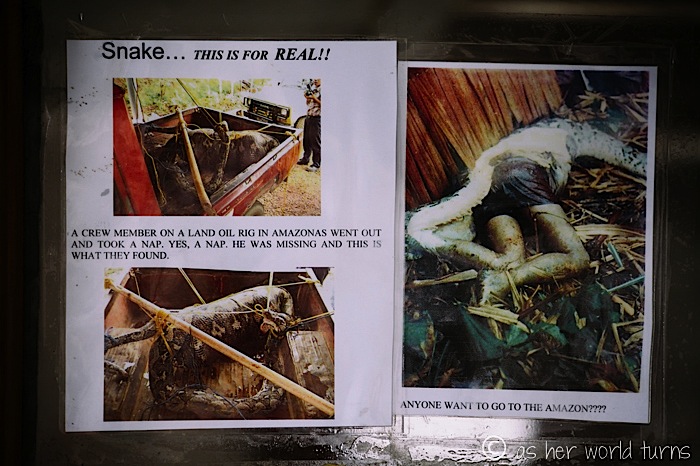
We spend most of our time at the Snake Park wandering cage to cage, reading placards about each snake — its size, habitat, venom, etc. I’ve included a sample of them here.
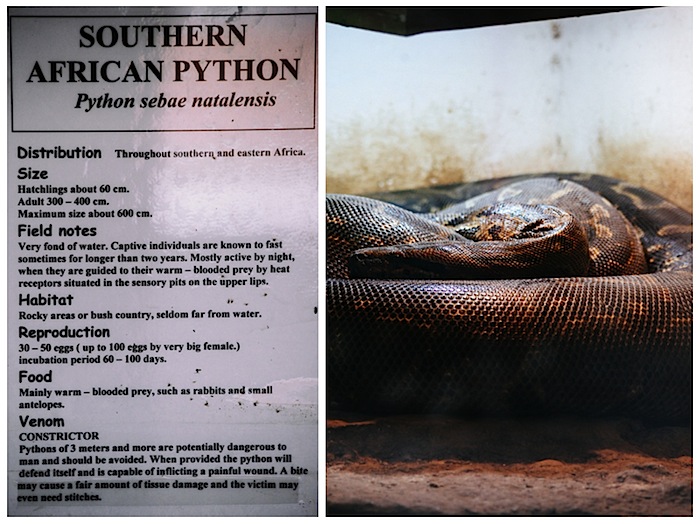
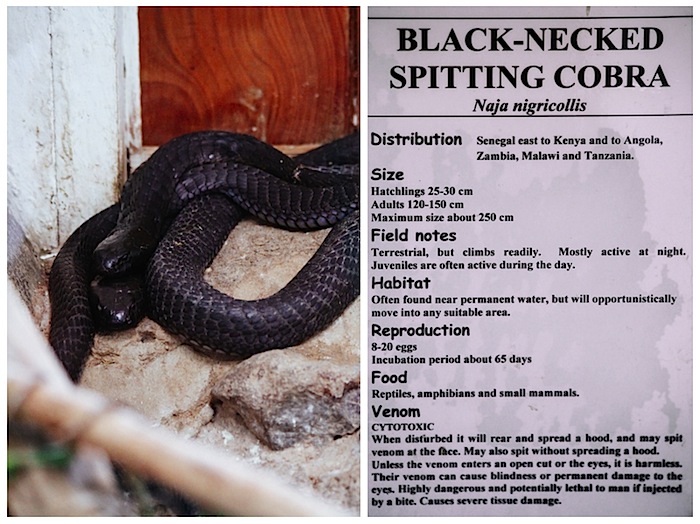
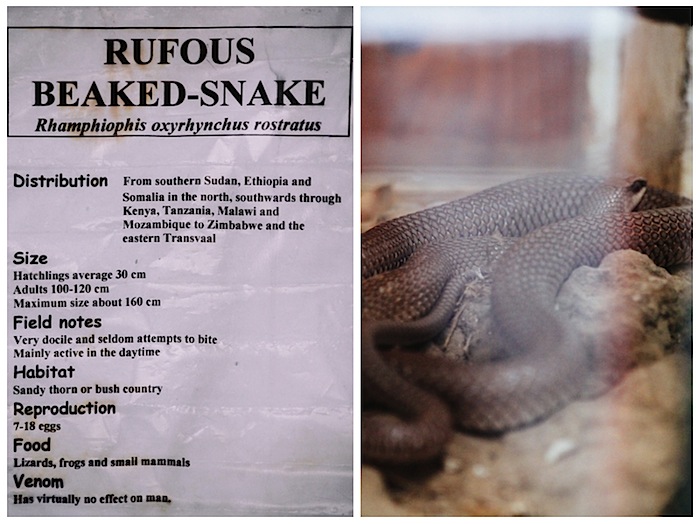
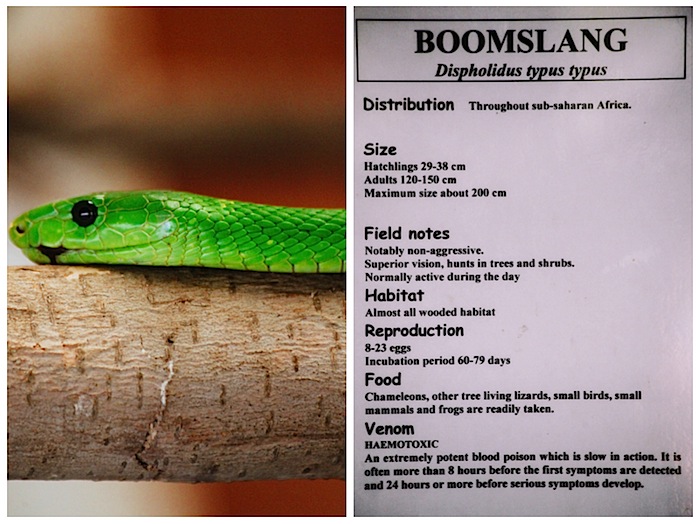

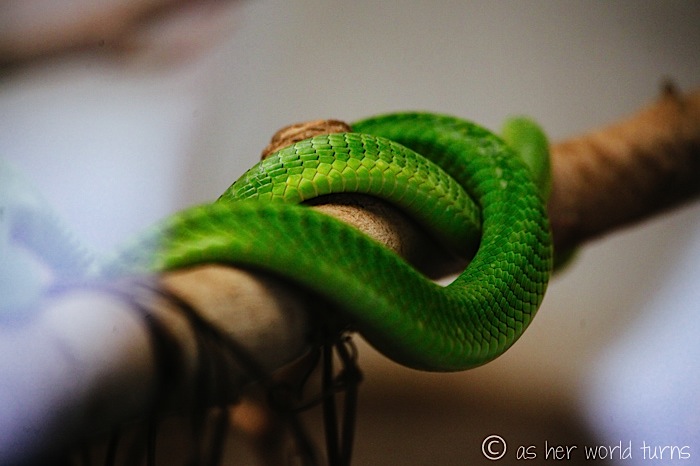
The Boomslang isn’t the only bright green snake — here’s the Eastern Green Mamba, showing its fangs:
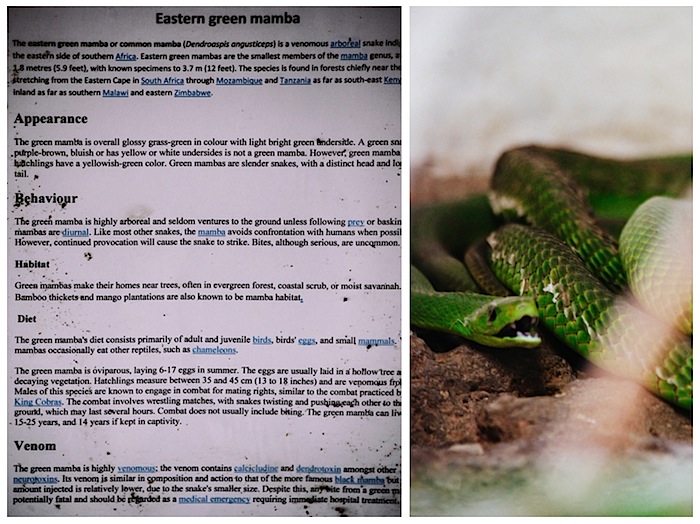
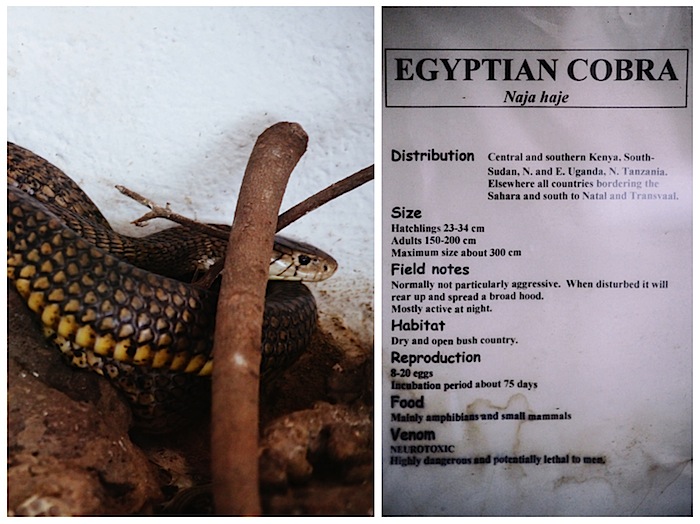
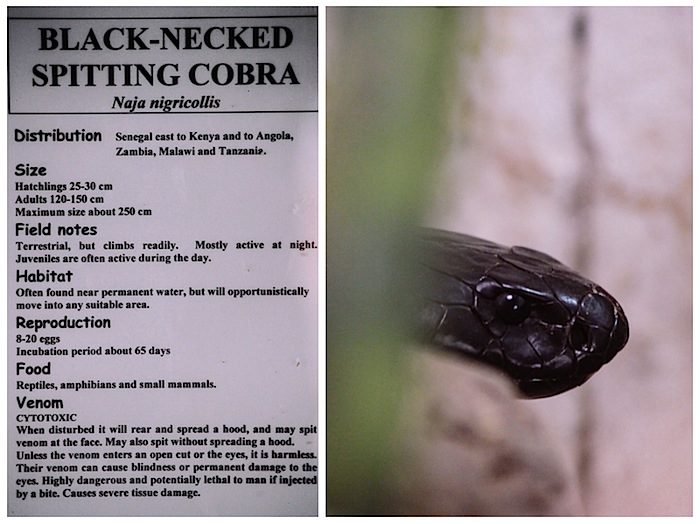
The Black Mamba snake is not on display this particular day, but it’s considered to be the largest venomous snake in Africa. Fun times!
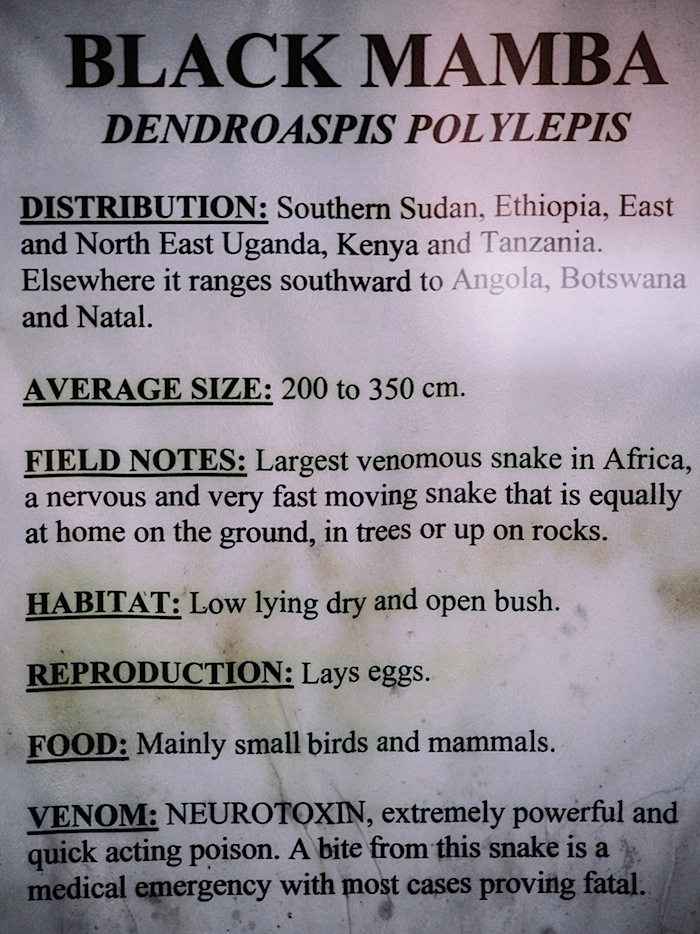
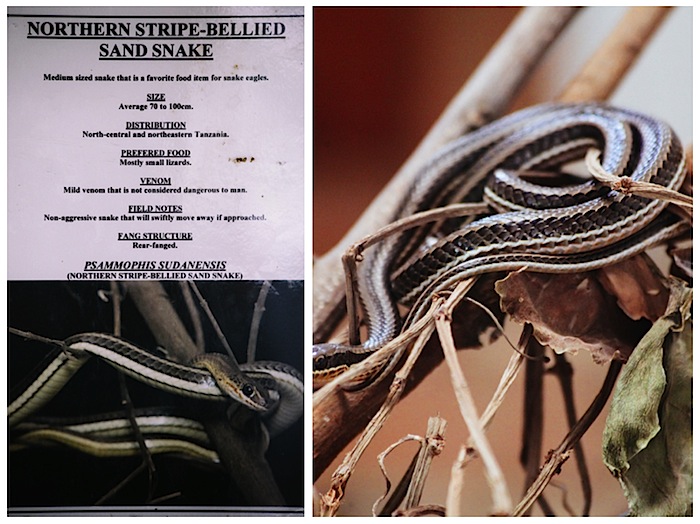
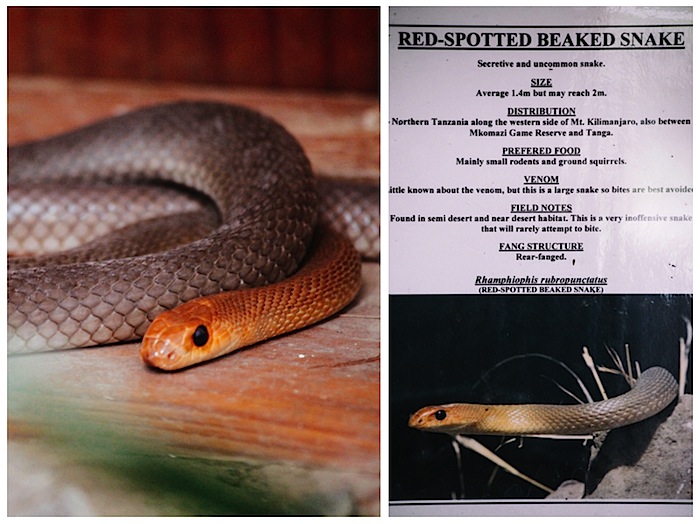
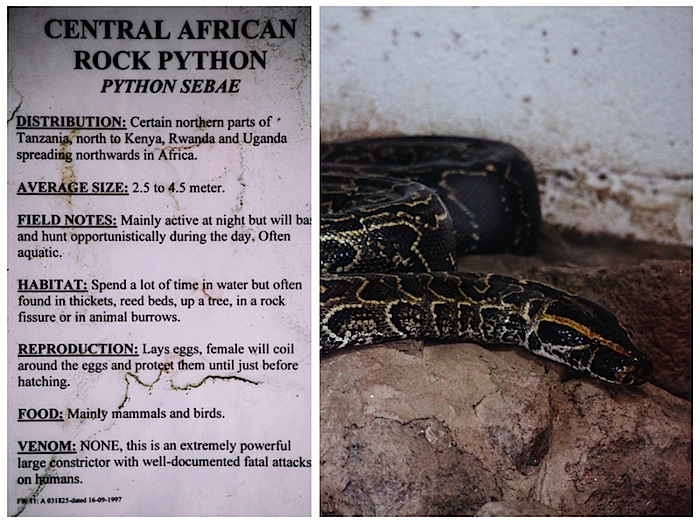
This one is a Puff Adder:
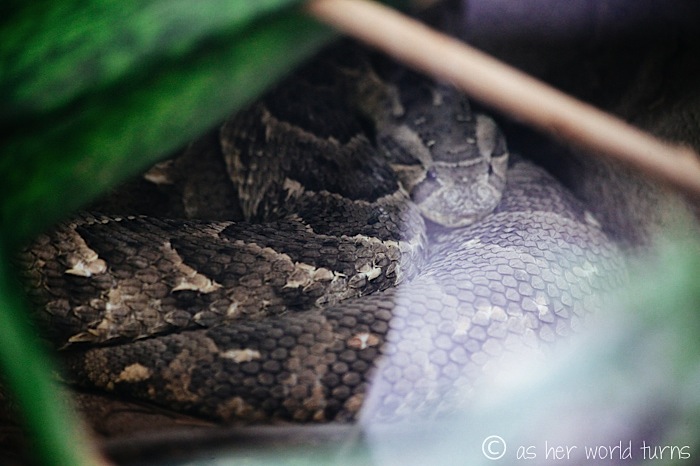
I forgot to write down what the next four are called. Blogger fail. But they’re neat photos so I’m including them anyways.
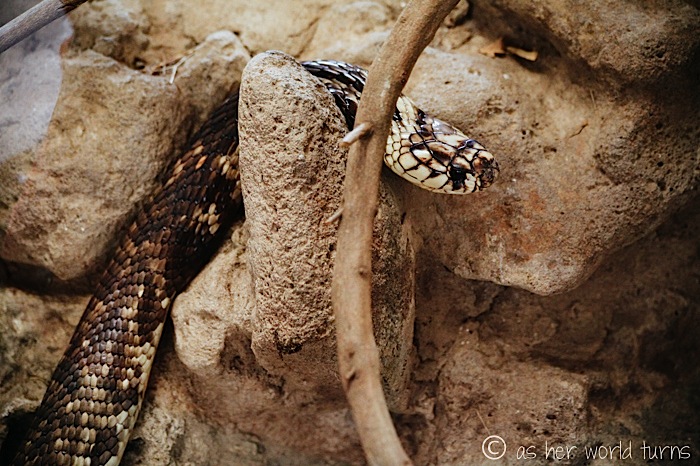
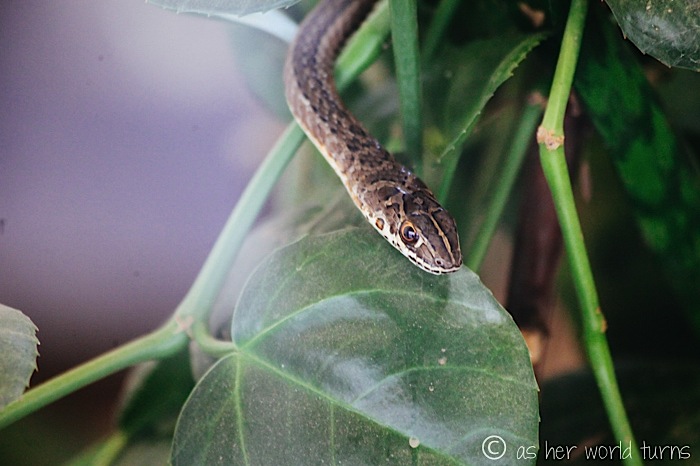
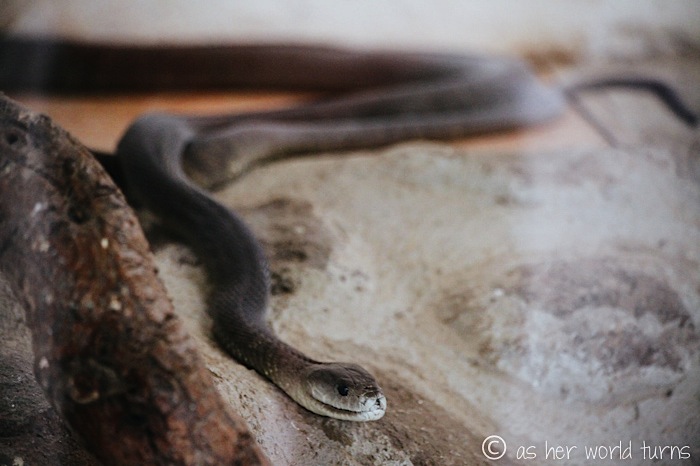
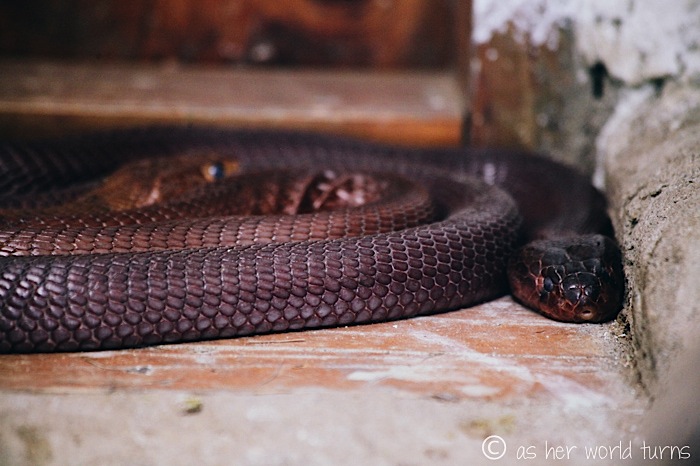
Snake Park is actually a misnomer because they have a variety of wildlife on display, such as vultures, hawks, baboons, and reptiles other than snakes.
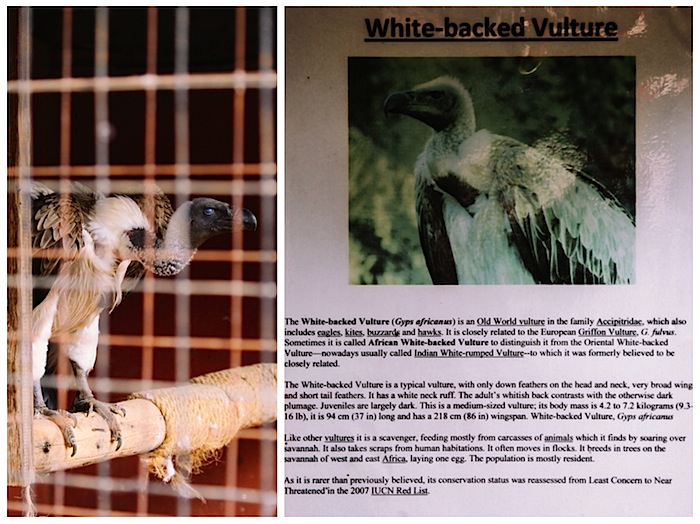
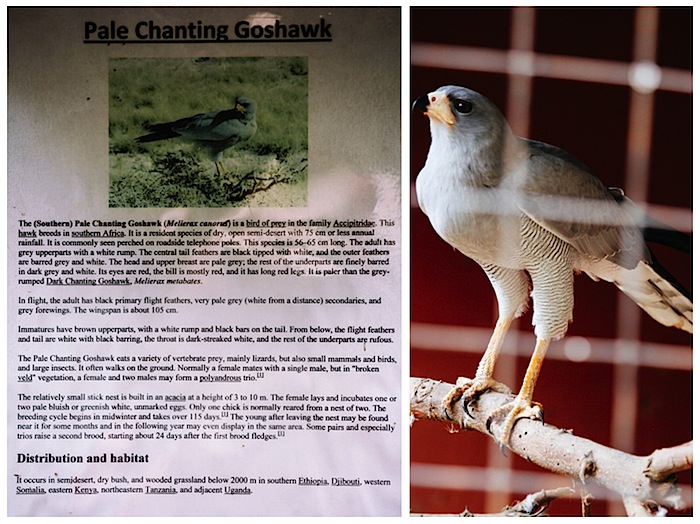
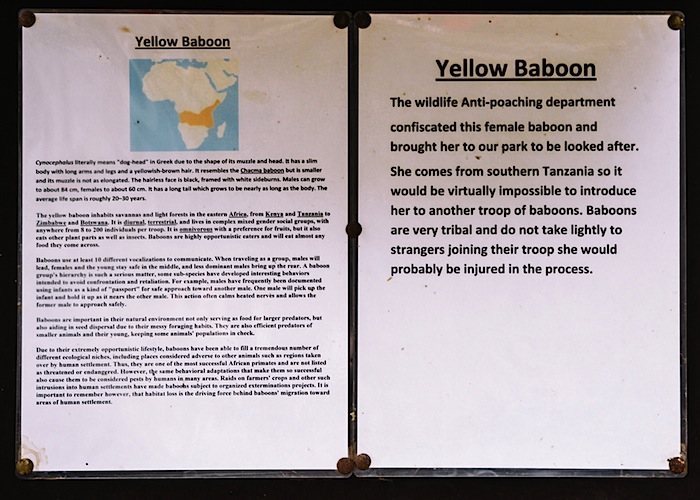
This Yellow Baboon breaks my heart. She’s very social and greets visitors with a handshake (see below) but otherwise seems quite lonely all by herself.
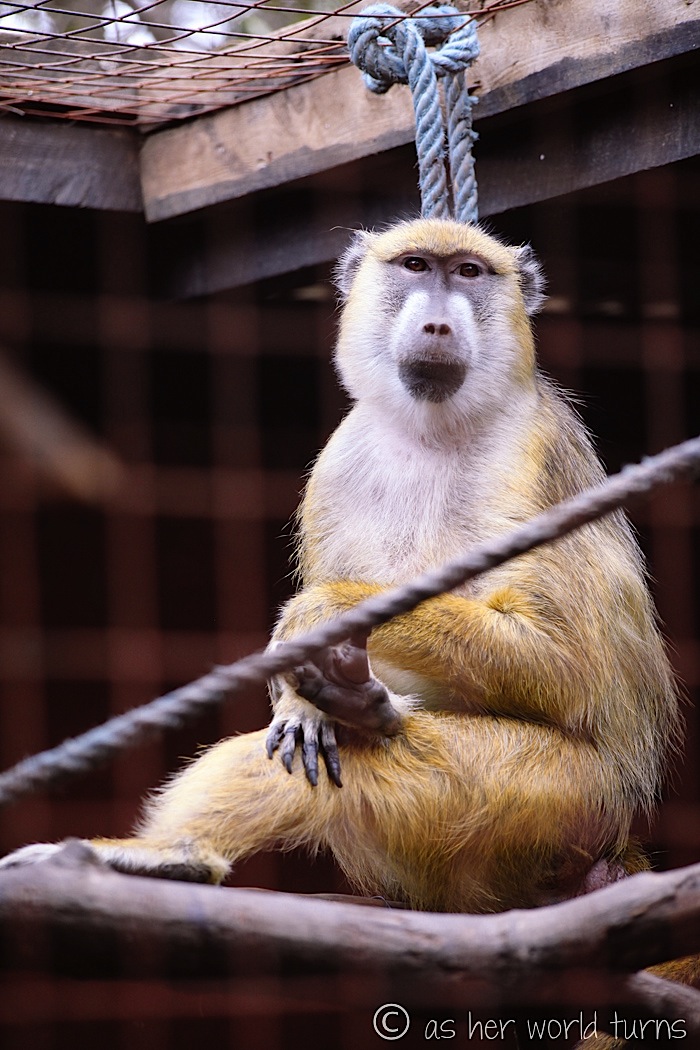
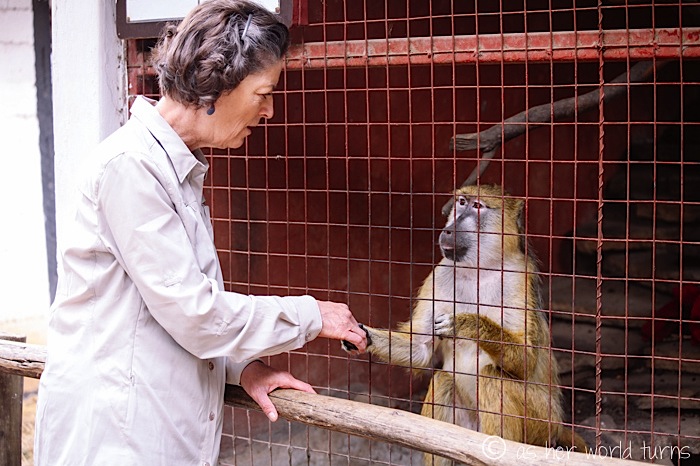
A croc advances in its enclosure:
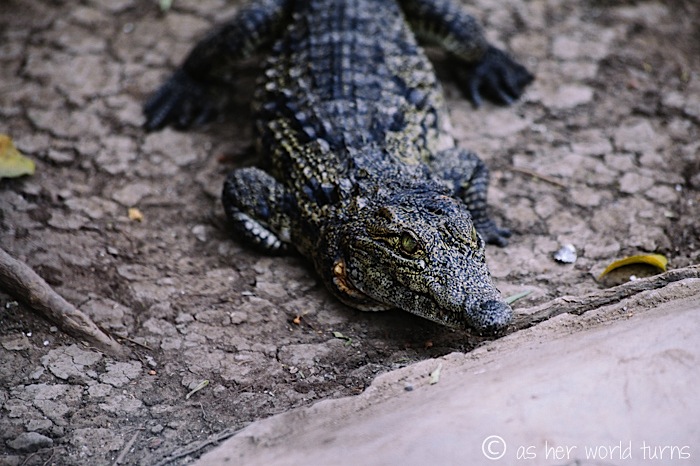
An iguana or lizard of sorts:
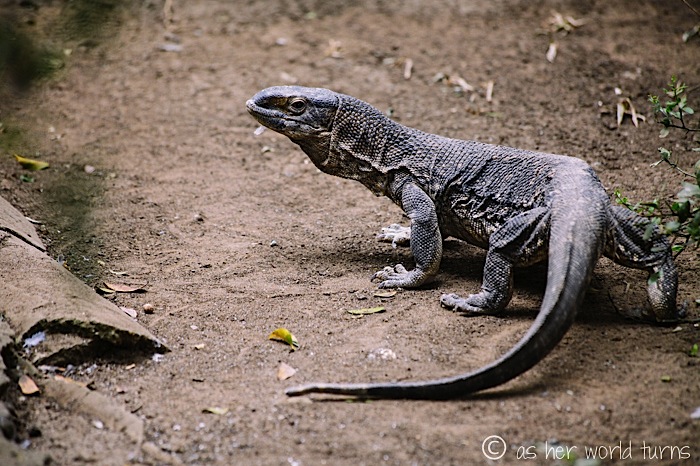
My sister is genuinely terrified of snakes (she carries a snake bite kit whenever she hikes in Southern California) and she is so uncomfortable the whole time we’re here. While the group moves from cage to cage, she stands back a few extra feet to add distance between her and the snakes. She’s not amused by the ones camouflaged in trees:
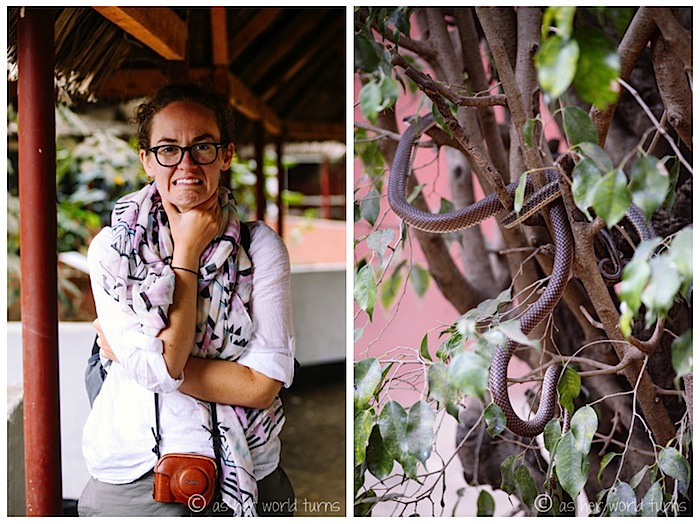
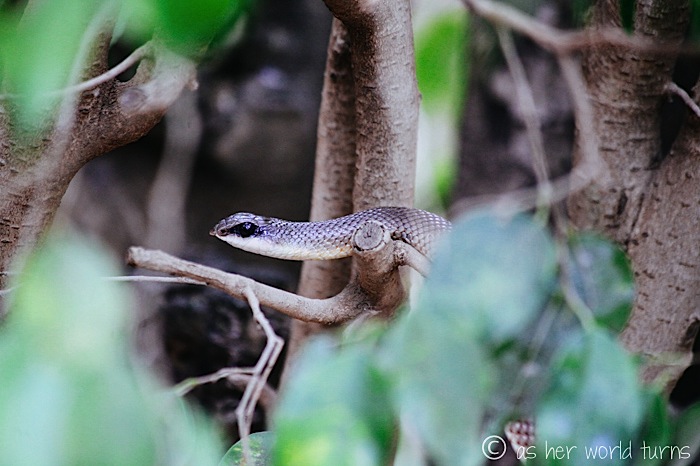
At the end of the tour our guide asks if anyone would like to hold a harmless snake. Several brave souls raise their hands, like sweet Renate from Germany (Renate and her husband Klaus are two of my favorite people and you’ll see more of them as I recap this trip).
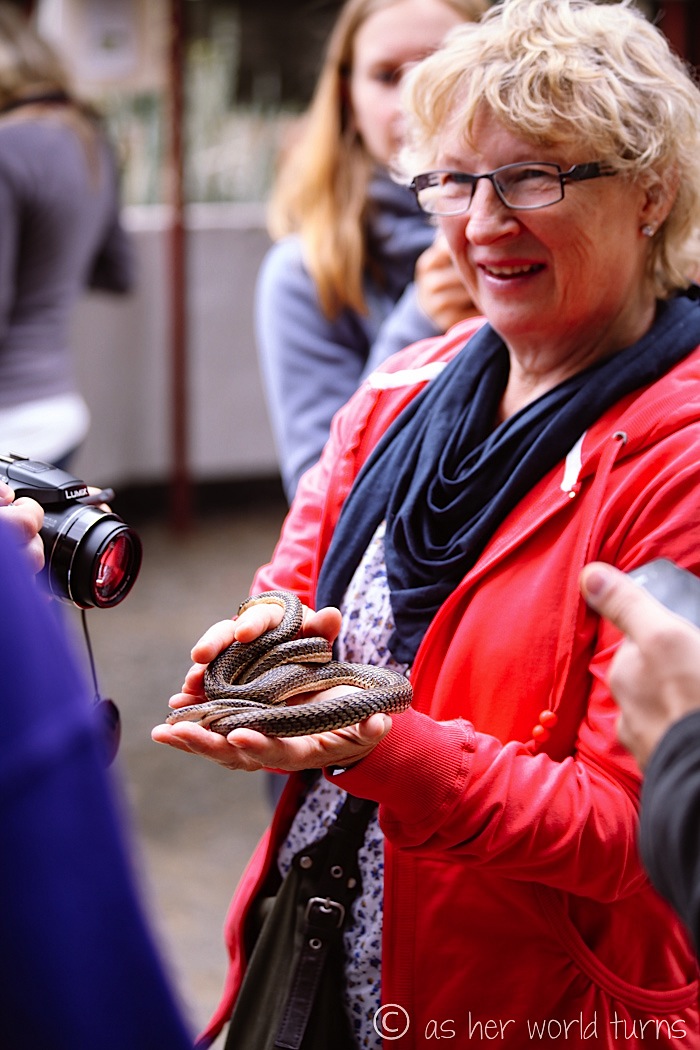
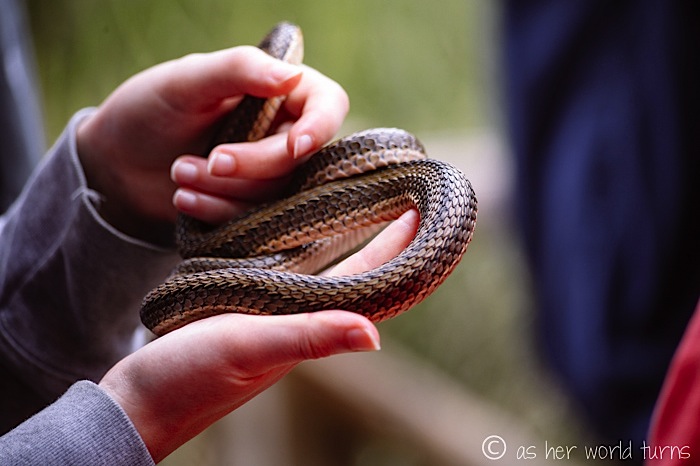
Our tour ends with a quick visit to the on-site Masai museum.
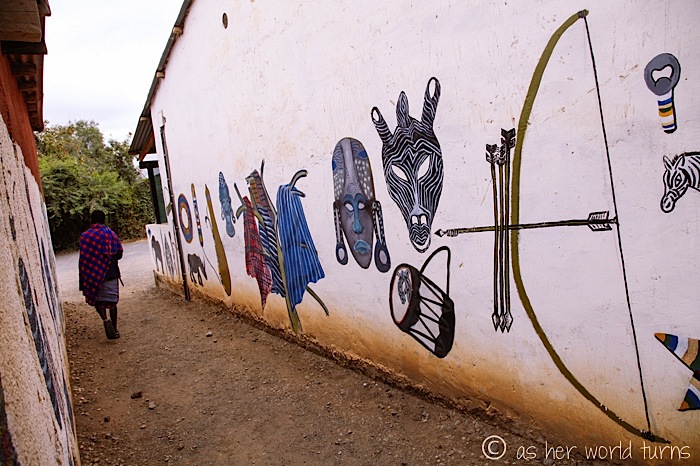
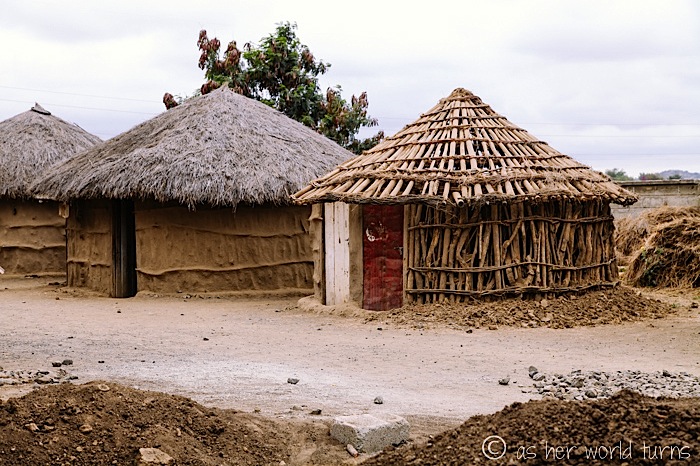
The museum is kind of hokey (and it doesn’t compare to an actual village visit) but it’s a fine enough introduction for the guests who have yet to experience a Masai village. They’ll get a chance to in the coming days.
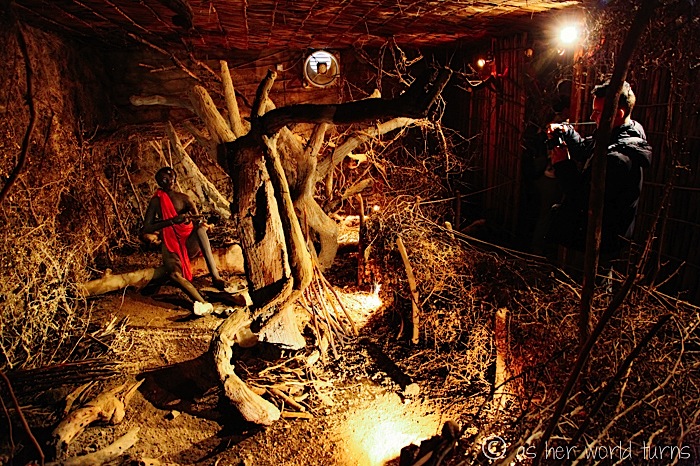
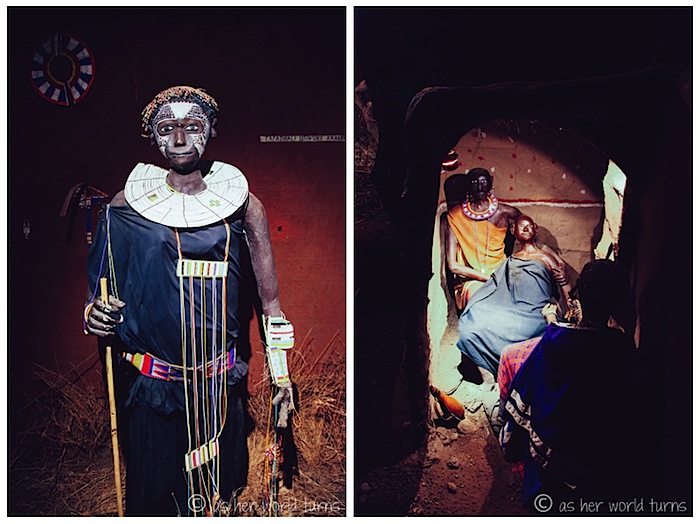
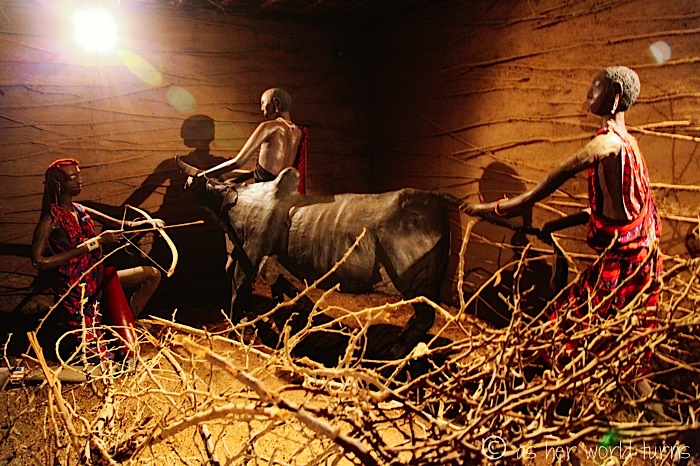
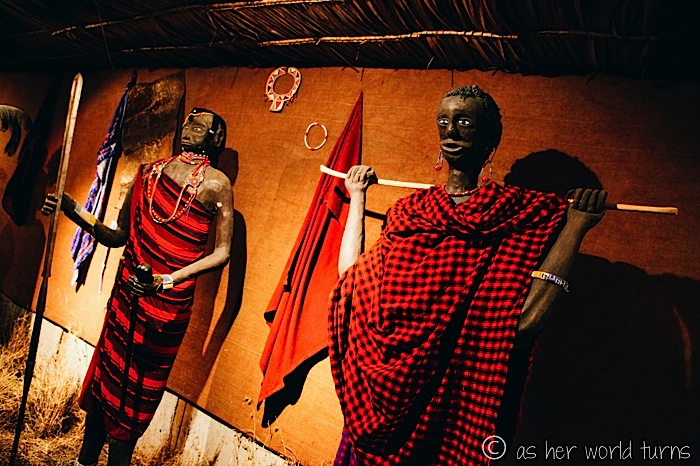
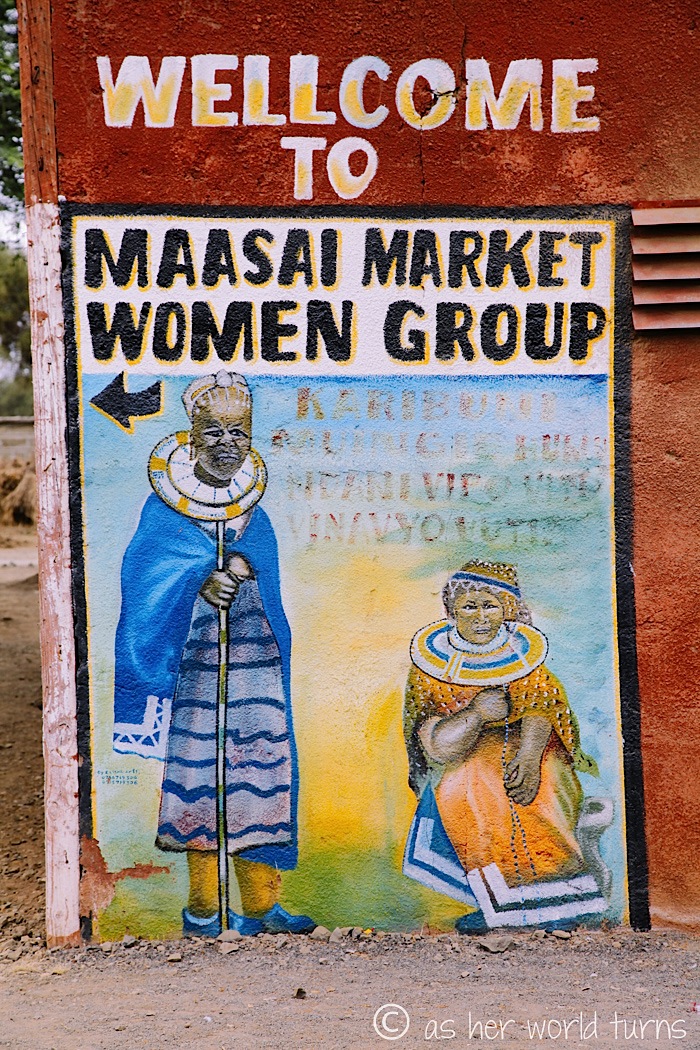
This shirt reads, “Mzunga,” a term that means “white person” and is commonly used to refer to tourists. It’s not meant to be derogative, just descriptive. For locals, “mzunga” mean tourism income.
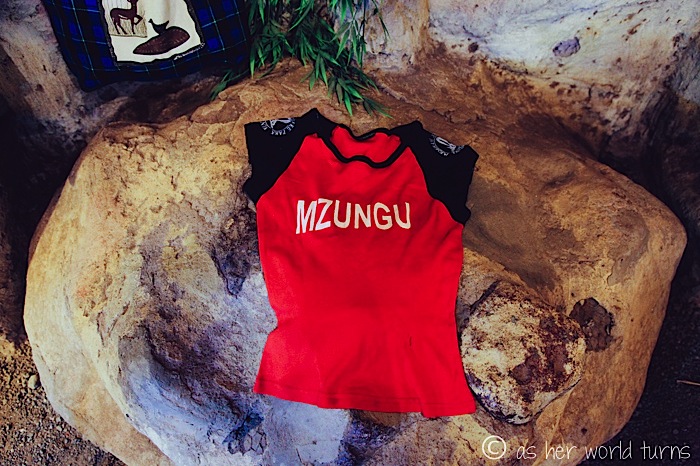
Later this afternoon we will head to Serengeti National Park — Nomad Tours outsources this 3-day trip to Serengeti Experience. For Bethany, it’s included in her 10-day tour, but for those of us on longer trips (like my 30-day tour) it’s considered an optional package priced at around $700. Most of the group has elected to go, but some opt to stay behind and do local trips instead since the price tag is rather hefty.
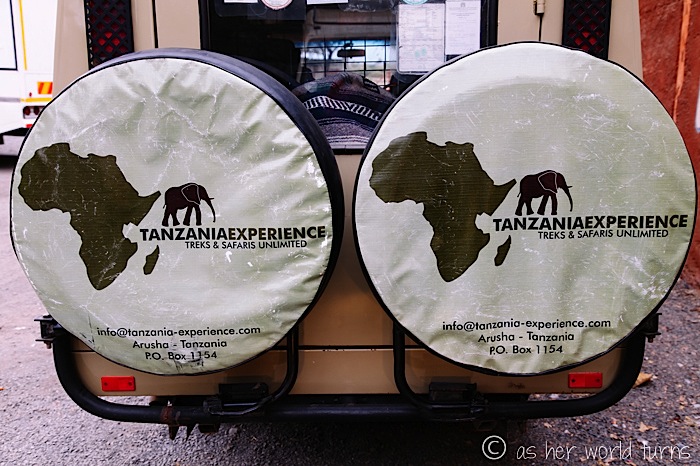
We stop by this termite mound — colonies of termites live inside, and the mounds grow to be quite large.
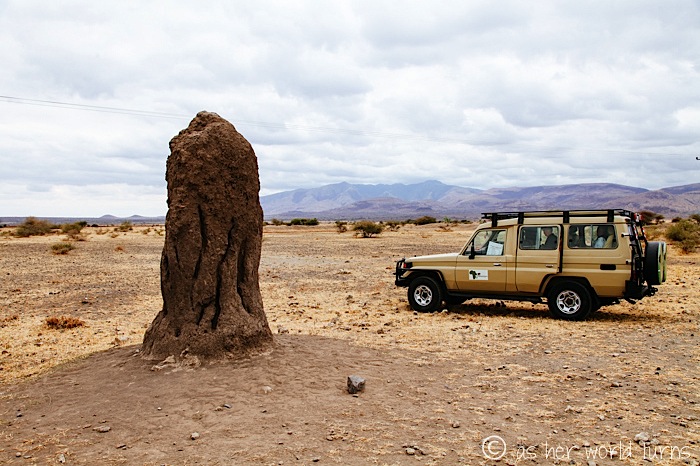
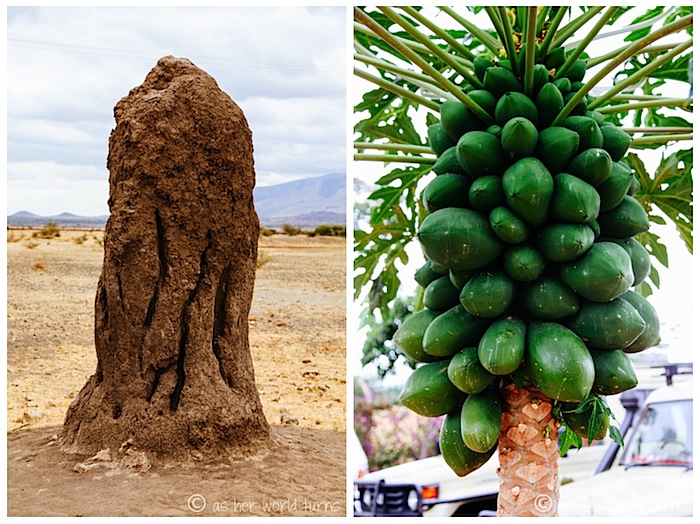
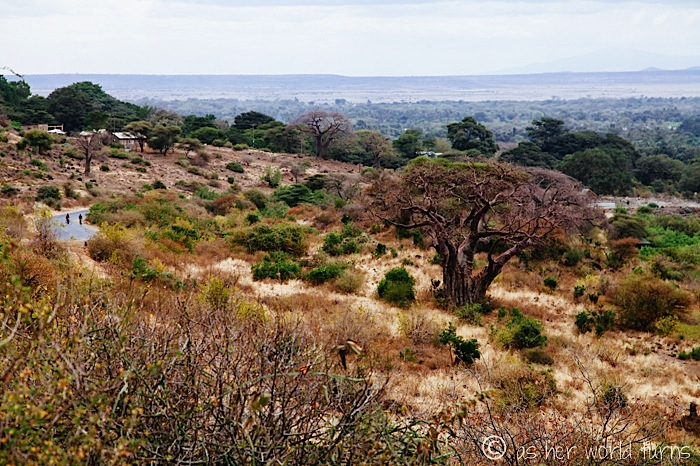
It’s a baobab tree! We’ll see many more throughout Tanzania, but this is one of the first ones we spot.
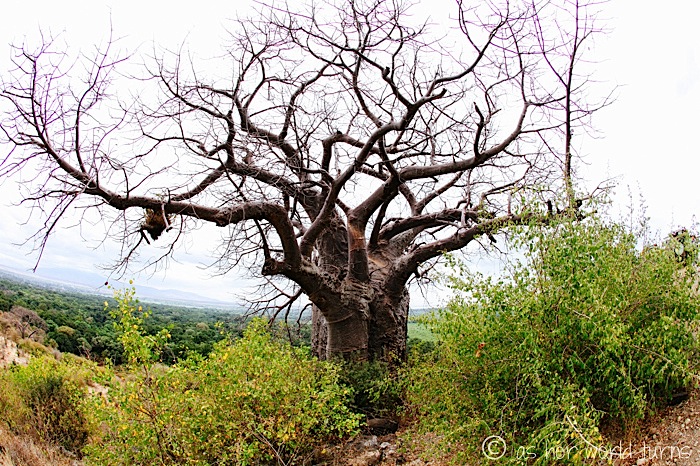
More coming from the Serengeti, one of the premiere game parks in all of Africa.
Thanks to Nomad Tours for partially discounting our trip in exchange for photography and blogging services. Opinions are my own.

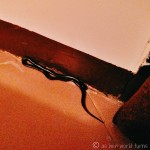

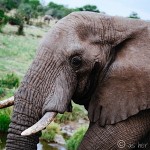
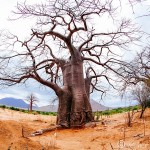


Love the snake zoo – I have to admit they used to scare the bejesus out of me, but now I’m quite at home with them. In fact, next time I go to a zoo I’m going to try and schedule a python experience (they pop one round your shoulders!). Oh, and just so you know – that is a baobab tree, not a bilboa.
Hi Susan! THANK YOU for the baobab correction, I knew it was wrong when I typed it but it slipped through the cracks when I proof-read! You are braver than me, as I don’t think I could drape a python over my shoulders without inducing a panic attack!